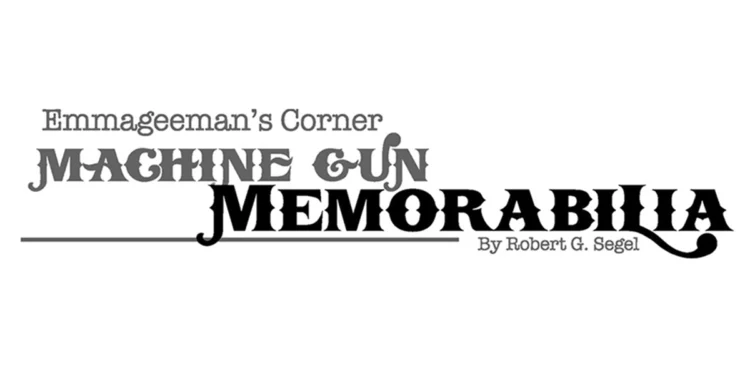The Schiffer Military History series contains many fine books on military aviation, naval and ground forces, the American Civil War as well as militaria and even modeling & collectable figures. However, until recently, they did not have much in the way of firearms books. French author Luc Guillou has brought three interesting books to the Schiffer library. These represent the beginning of the Classic Guns of the World series. (Besides the three books already released and reviewed here, the Spring/Summer 2019 catalog mentions that a two-volume set profiling the German P.08 Luger will soon be released. These are also by Luc Guillou.)
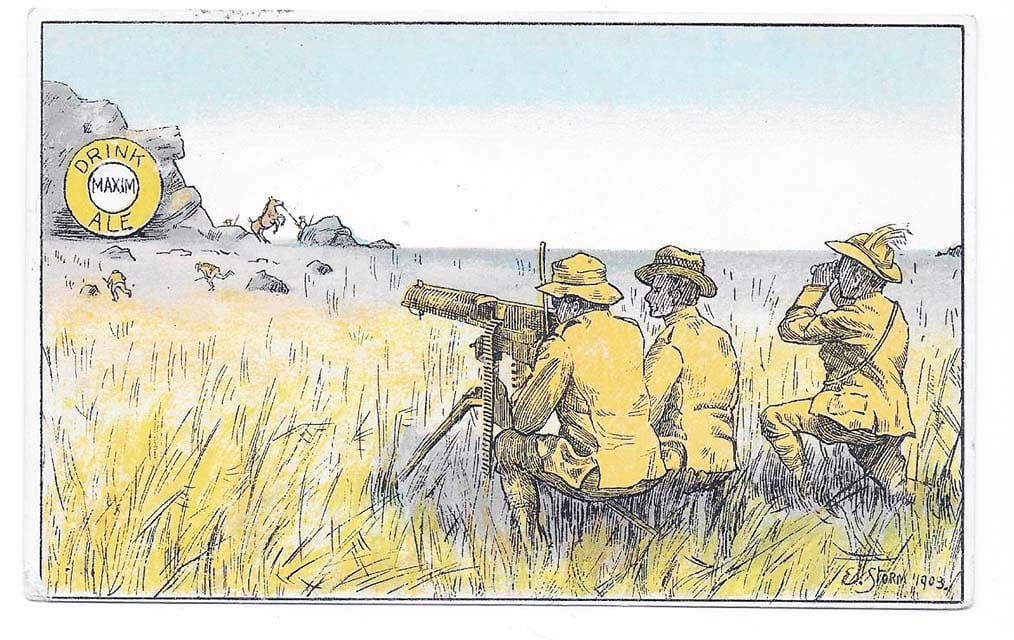
A second “brother” printed colored postcard of an artist-drawn war scene taking place in the South African Boer War painted and signed by E. Storm in 1903. This scene seems to be at sunset with the notation of “Drink Maxim Ale” as part of the setting sun.
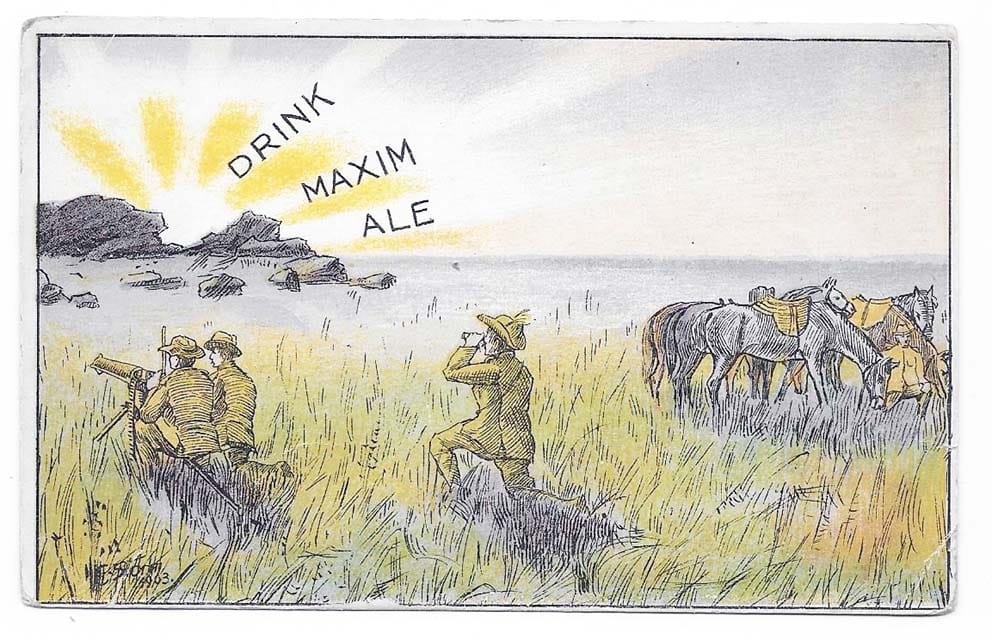
World War I-era sweetheart or veteran’s lapel pin in the shape of a guidon with the Army machine gun colors of red and blue enamel. Trimmed in brass, the top half of the guidon has the number “1,” and the bottom half of the guidon in blue has “M.G.B.” (1st Machine Gun Battalion). Pin back.
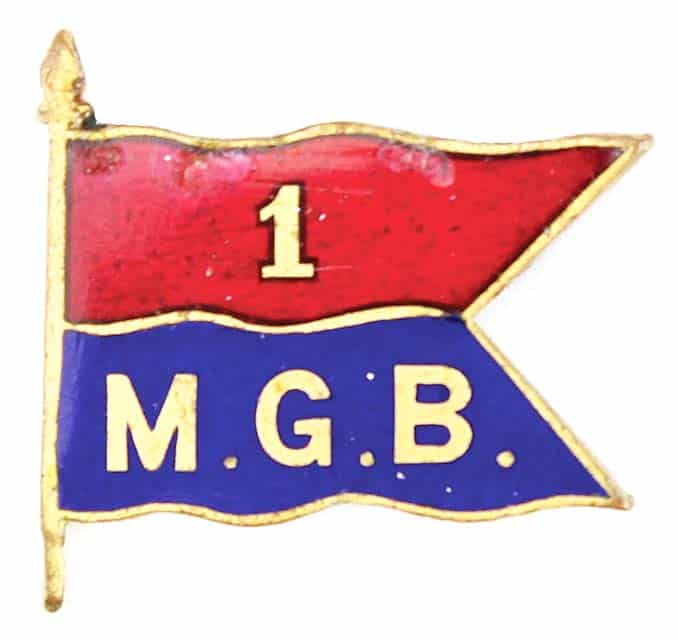
No. 2 Battery Sudan Motor Machine Gun Corps (circa 1935-1945) sun helmet badge. (Arabic name: Kingi Batteria Ottomobilat Madaf a El Makina). Blackened bronze badge of winged wheel with crossed Vickers to the center. Two lugs to the rear. Attached to a diamond-shaped, dark blue, Melton felt baking that was worn on the side of the sun helmet.
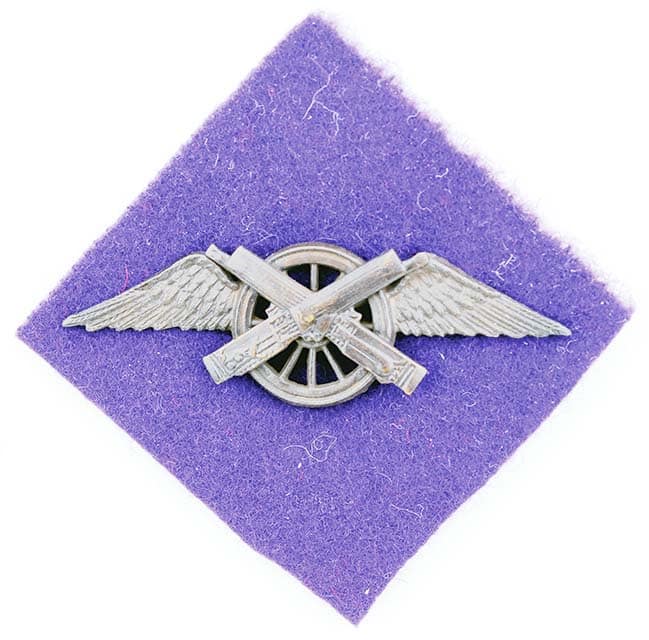
First Day coin cover for the Centenary of the First World War from Gibraltar, denoting weaponry—specifically machine guns. The 8-block, 22-pence stamps, canceled on the first day of issue of February 18, 2015, depict a Vickers machine gun in an anti-aircraft pose. The main image on the card is of a Lewis gunner in an anti-aircraft pose. The 50-pence commemorative coin (attached in plastic) shows on the obverse a Lewis gunner firing over sandbags and a Hotchkiss gunner with a belt of machine gun cartridges running edge-to-edge in the center. Prominent to the face of the coin is a line from the poem, “Arms and the Boy” by Wilfred Owen, written in 1917, stating, “Blue with all Malice like a Madman’s Flash.” The coin is a 24-carat gold-plated steel Crown from Jersey. The reverse has an image of Elizabeth II. The coin measures 1 1/2 inches in diameter.
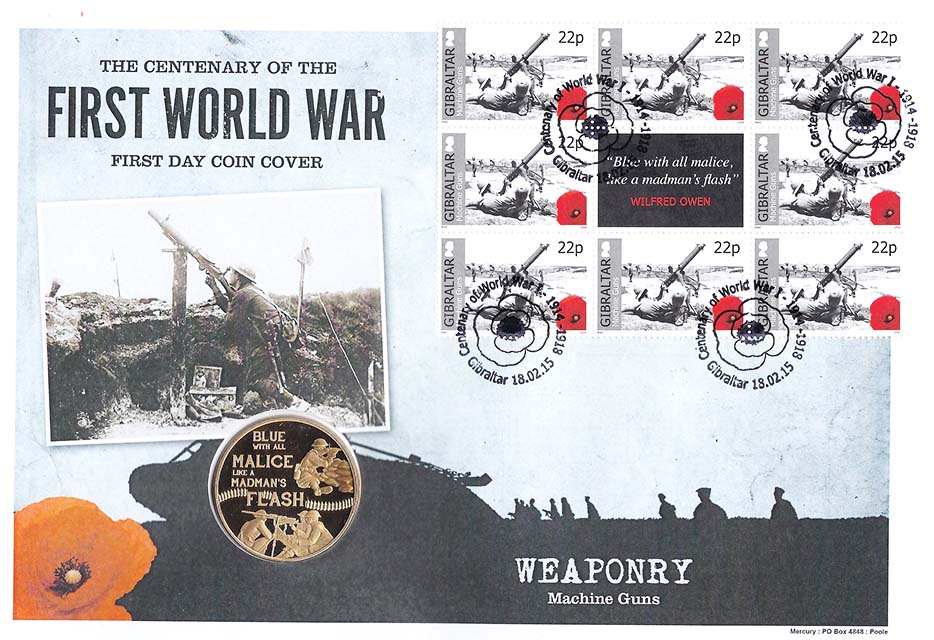
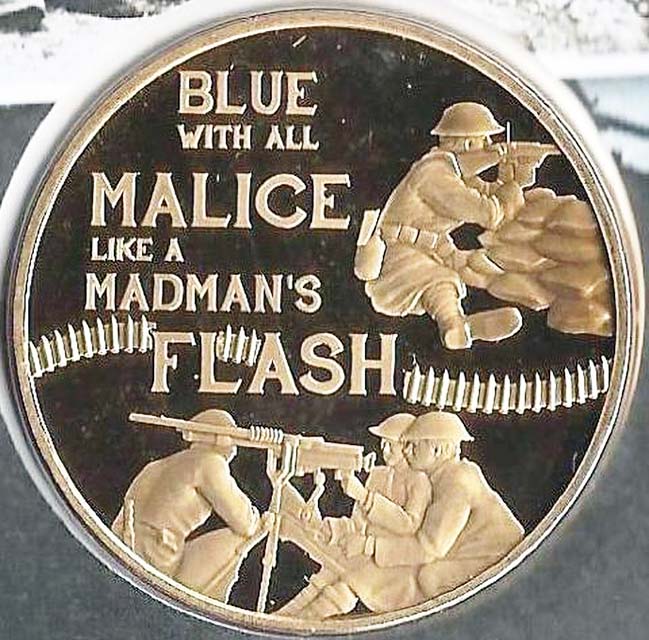
Interwar Latvian brass tank or armored car machine gunner’s proficiency badge circa 1919–1926. Crossed Vick-ers on tank that is on a spoked tire. Two-piece screw construction. Screw back. Spinner marked: “Arm. Ekonom. Veikals, Rīgā.”
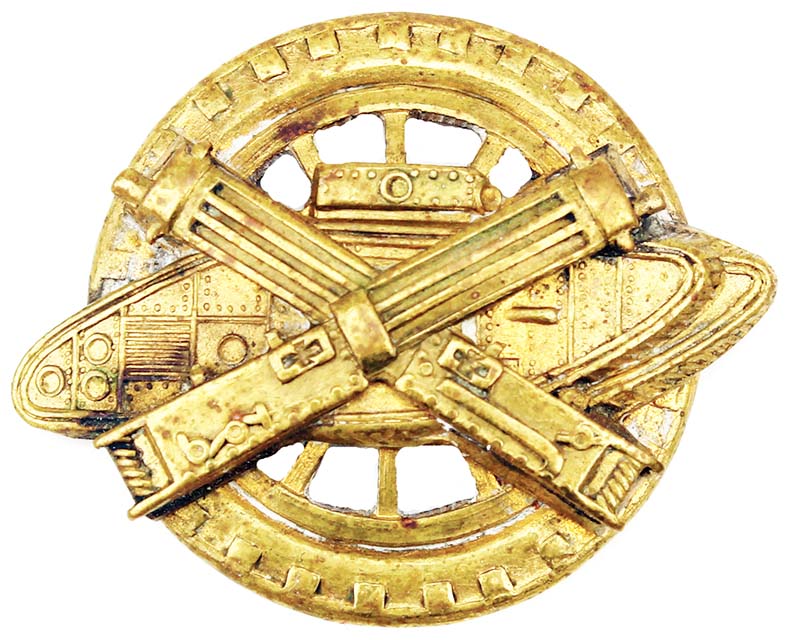
Ceylon Planters Rifle Corps Machine Gun Section cap, collar and shoulder title. The cap and collar badges are blackened bronze, showing tea leaves with “M” and “G” to each side with a three-part Latin motto below the letters: “Salus Unitas Nostra” (“Our Safety Unit”); and a single banner below that reads, “Ceylon Planters Rifle Corps.” Both the cap and collars have two lugs to the rear. The brass shoulder title simply reads, “M.G.” over “CPRC” (Machine Gun Section Ceylon Planter Rifle Corps). The unit was raised in 1901 as a volunteer (reserve) regiment of the Ceylon Defence Force based in Kandy, and it existed until 1949. The regiment was made up of Europeans that were tea and rubber planters in the hills of Sri Lanka. The regiment deployed personnel to fight in the Second Boer War, World War I and World War II.
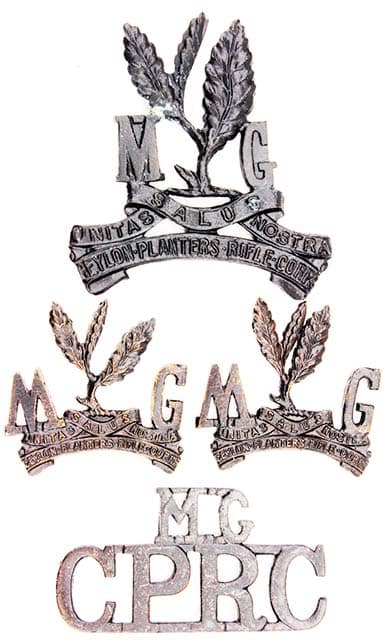
| This article first appeared in Small Arms Review V23N8 (Oct 2019) |



